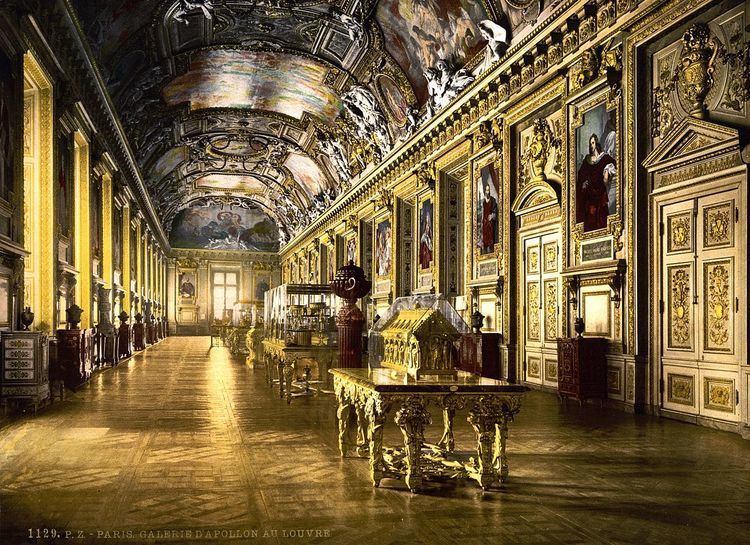 | ||
The Galerie d'Apollon is a part of the Louvre, famous for its high vaulted ceilings with painted decorations.
The room was originally called the 'Petite Galerie' of the Louvre and was decorated by the artists of the Second School of Fontainebleau, most notably Toussaint Dubreuil, Jacob Bunel and his wife Marguerite Bahuche according to designs by Martin Fréminet, for Henri IV of France.
After a fire in the small gallery destroyed much of it on 6 February 1661, it was necessary to rebuild this part of the Louvre. Architectural work was entrusted to Louis Le Vau, who carried out reconstruction activities between 1661 and 1663, while Charles Le Brun was assigned responsibility for decorations by Colbert. The sculptor François Girardon was responsible for the stucco sculptures. This was the first Royal Gallery for Louis XIV, which served as a model for the Hall of Mirrors of the Palace of Versailles.
Brief Timeline
The thirteen-year-old Henry James wrote of the Gallery "the wondrous Galerie d'Apollon...drawn out for me as a long but assured initiation and seeming to form, with its supreme coved ceiling and inordinately shining parquet, a prodigious tube or tunnel through which I inhaled little by little, that is again and again, a general sense of glory. The glory meant ever so many things at once, not only beauty and art and supreme design, but history and fame and power, the world in fine raised to the richest and noblest expression."
As part of the Louvre, the Apollo gallery is both a national and world heritage site.
